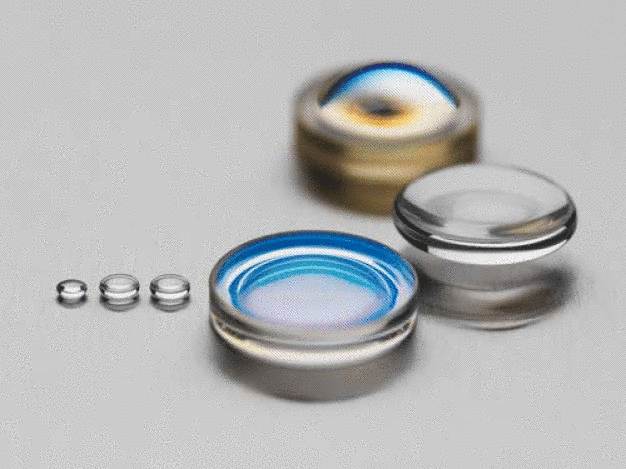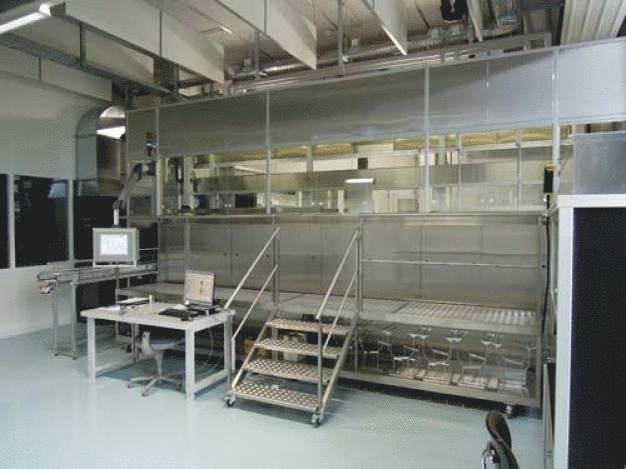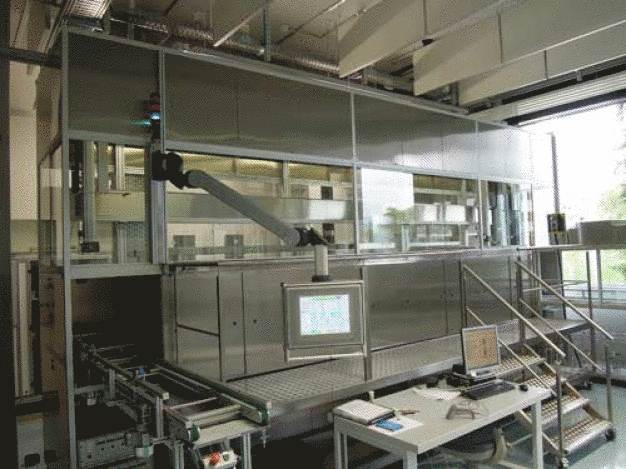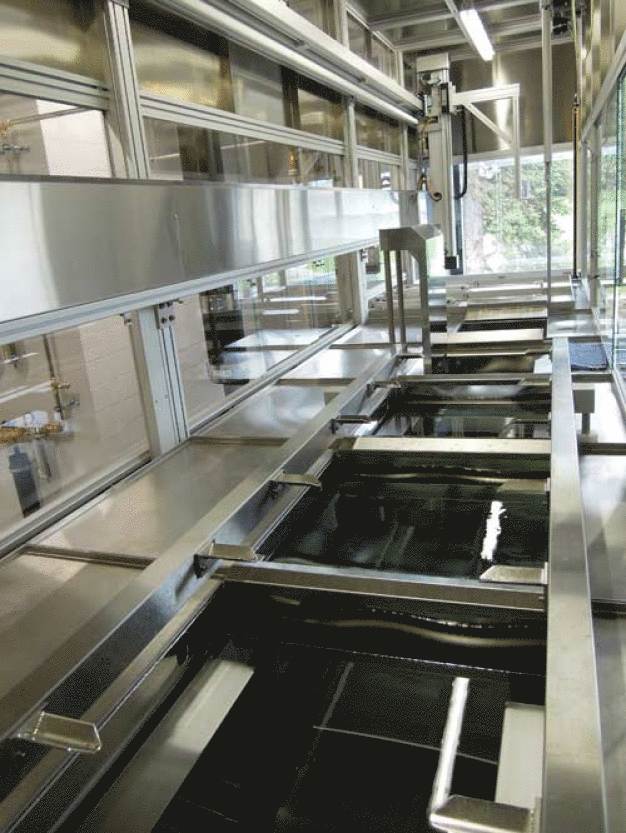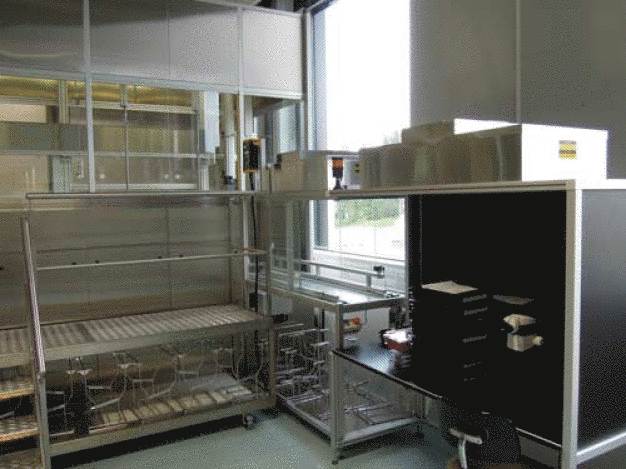- Gebäude & Räume
Doris Schulz
2.000 unterschiedliche Teile vergütungsreif reinigen
Feinstreinigungssystem mit Hydrofluorether-Trocknung für empfindliche optische Gläser
Es ist nicht allein die Artikelvielfalt, die bei der Reinigung optischer Linsen und Prismen eine Herausforderung darstellt. Auch die Teiledimensionen und sehr unterschiedliche Glassorten machen bei FISBA Optik ein ausgeklügeltes Endreinigungssystem erforderlich. Entwickelt wurde es von der UCM AG, die es mit einer HFE-Trocknung ausstattete. Denn für einige der verarbeiteten Gläser ist VE-Wasser zu aggressiv.
Die im schweizerischen St. Gallen ansässige FISBA Optik AG zählt seit über 50 Jahren zu den weltweit führenden Anbietern von optischen Systemen, Geräten und Komponenten. Die Produkte werden für verschiedene Anwendungen beispielsweise in der Medizintechnik, Bildverarbeitung, Messtechnik, Biophotonik, Laserdiodentechnologie, Astronomie und Raumfahrt nach Maß gefertigt. Dabei setzt das Unternehmen als einer der ersten Hersteller in Europa auch das Präzisions-Blankpressen zur wirtschaftlichen Serienfertigung von starken, hochqualitativen Asphären und Optiken mit komplexen Geometrien aus Glas ein. „Die Qualität unserer optischen Bauteile hängt entscheidend von deren Sauberkeit ab“, erklärt Peter Boner, Leiter Reinigung Präzisionsoptiken bei FISBA.
Sauberkeit – ein qualitätsentscheidender Faktor
Um auch hier höchste Anforderungen zu erfüllen, investierte das Unternehmen vor rund drei Jahren in ein neues Ultraschall-Reinigungssystem für die Vorreinigung. Den Zuschlag dafür erhielt die Schweizer UCM AG, ein Unternehmen der Dürr Ecoclean Gruppe. „Wesentlich bei der Entscheidung war natürlich die Reinigungsqualität. UCM ist sehr flexibel und verfügt über viel Erfahrung und Know-how in der optischen Industrie, von dem wir profitieren konnten. Die Reinigungslösung wurde sowohl anlagentechnisch als auch von der Chemie her optimal auf unsere Bedürfnisse ausgelegt, sodass wir ein sehr gutes Ergebnis erzielen. Hinzu kommen die räumliche Nähe und die offene, partnerschaftliche Zusammenarbeit“, fasst Peter Boner die damaligen Entscheidungskriterien zusammen.
Folglich war UCM auch als ein Anbieter gesetzt, als es 2012 darum ging, die Reinigungsanlage für die Endreinigung zu ersetzen. Einerseits war sie in die Jahre gekommen. Andererseits konnten Optiken aus verschiedenen Glassorten damit nicht gereinigt werden, was eine aufwendige manuelle Reinigung erforderte.
Artikelvielfalt, Dimensionen und Gläser als Herausforderung
FISBA fertigt zwischen 1.500 und 2.000 unterschiedliche Optiken. Darunter sind hochpräzise optische Linsen, deren Durchmesser nur 0,5 Millimeter beträgt. Die enorme Artikelvielfalt sowie die sehr unterschiedlichen Dimensionen stellten bei der Konzeption der neuen Reinigungsanlage eine Herausforderung dar. Zu berücksichtigen war darüber hinaus, dass auch die aus hochempfindlichen und säuresensitiven Gläsern gefertigten Teile in der Anlage vergütungsreif gereinigt werden können. Unabhängig von Größe und Material sind dabei höchste partikuläre und filmische Sauberkeitswerte zu erfüllen. Nach der Reinigung werden die Optiken teilweise ein- oder mehrseitig vergütet.
Hohe Flexibilität sichert teilespezifische Reinheit
Auf Basis des bestehenden Anlagenkonzepts für die Vorreinigung entwickelte UCM einen Reinigungsprozess, der diese Kriterien erfüllte. „Da wir bei der Vorreinigung mit einem Kombiprozess mit Lösemittel- und wässrigen Schritten eigentlich schon vergütungsreife Teile erzielen, bot sich diese Lösung an. Die Endreinigung erfolgt dagegen mit einem rein wässrigen Medium, das in Versuchen ermittelt wurde“, berichtet der Leiter der Präzisionsreinigung. Die Aufbereitungssysteme für die Spül- und Trocknungsmedien zählten ebenfalls zum Leistungsumfang von UCM.
Das Reinigungssystem ist vollständig gekapselt und verfügt über acht Tauchbecken, von denen sechs mit Mehrfrequenz-Ultraschall (40, 80 und 120 kHz) ausgestattet sind. Der Leistungsbereich lässt sich jeweils von zwei bis 15 Watt/Liter einstellen. Dies ermöglicht eine optimale Abstimmung des Ultraschalls an das jeweilige Reinigungsgut. Die für die Behandlung der verschiedenen Optiken optimalen Parameter wie beispielsweise Leistung und Frequenz des Ultraschalls sowie Verweilzeit sind als teilespezifische Programme definiert und in der Anlagensteuerung hinterlegt. Damit die definierte Verweilzeit in den jeweiligen Wannen exakt eingehalten wird, ermöglicht die flexible Steuerung die Eingabe von „priorisierten Zeiten“. Dies führt auch zu einer Optimierung des Durchsatzes. „Wir können 64 Programme abspeichern. Momentan arbeiten wir mit etwa 20 Programmen in der Serienfertigung. Wir haben aber auch immer Neuentwicklungen und da ist diese Flexibilität durch die nicht produktiv genutzten Programmplätze super“, berichtet Peter Boner. Das Programm wird über einen Barcode, der sich auf den jeweiligen Auftragspapieren befindet, vom Anlagenbediener eingelesen. Anschließend läuft der Prozess vollautomatisch ab.
Maßgeschneiderte Reinigungsprozesse
In den ersten Wannen werden Verunreinigungen von Handling und Transport sowie Handschuhabdrücke mit Ultraschall von den Optiken abgereinigt. Alle Reinigungswannen sind mit Ultraschall ausgerüstet. Das nachfolgende Spülen erfolgt als Tauch-/Spritzprozess. Dafür wurde diese Wanne tiefer gelegt, so dass die Teile in das Becken eingetaucht, mit Ultraschallunterstützung gespült und beim Herausnehmen mit VE-Wasser abgespritzt werden können. Diese Lösung verhindert einerseits, dass die Optiken lange Zeit VE-Wasser ausgesetzt sind. Andererseits sorgt sie für eine optimale Spülwirkung sowie minimale Verschleppung von Wasser in das nachfolgende Dewatering-Becken.
Schonende Trocknung mit Hydrofluorether (HFE)
Die Wasserverdrängung wurde durch die Trocknung mit HFE erforderlich. Dieses Verfahren ermöglicht die vergütungsreife Reinigung und Trocknung auch sehr empfindlicher Gläser ohne Beeinträchtigung ihrer optischen Wirksamkeit.
Für den Trocknungsprozess befinden sich die letzten beiden, ebenfalls mit Multifrequenz-Ultraschall ausgestatteten Becken in einer geschlossenen Kammer. Die Konzeption der Anlage ermöglicht es, dass die Warenträger ohne Öffnen der Wannenabdeckung vom ersten ins zweite Becken umgesetzt werden. Das HFE wird von der letzten Stufe in Kaskade zur ersten geführt und gelangt von dort in eine Destillation, die es kontinuierlich aufbereitet. Eine über den Wannen platzierte Kondensationszone verhindert, dass die bei der Trocknung und dem Herausfahren der Teile entstehenden HFE-Dämpfe in die Umgebung gelangen. Der Dampf kondensiert an den bis zu minus 23°C kalten Kühlrippen und wird in die Destillation geleitet.
Die trockenen Optiken gelangen nach der Trocknung über das gekapselte und mit einer Filter-Fan-Einheit (Flow-Box) ausgestattete Entladeband zu einer Kontrollstation, wo sie unter Reinraumbedingungen geprüft werden. „Mit den Reinigungsergebnissen sind wir sehr zufrieden. Außerdem ist der Reinigungsprozess durch die entfallenden manuellen Arbeiten wirtschaftlicher geworden. Wir sind überzeugt, mit UCM eine sehr gute Wahl getroffen zu haben“, resümiert Peter Boner.

UCM AG
Langenhagstrasse 25
9424 Rheineck
Schweiz
Telefon: +41 71 8866760
Telefax: +41 71 8866761
eMail: info@ucm-ag.com
Internet: http://www.ucm-ag.com





